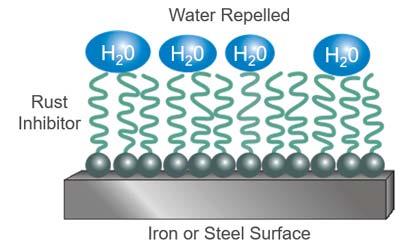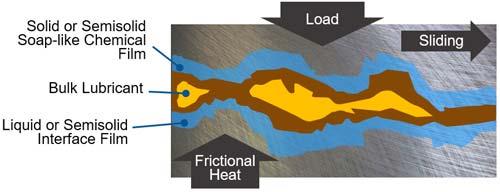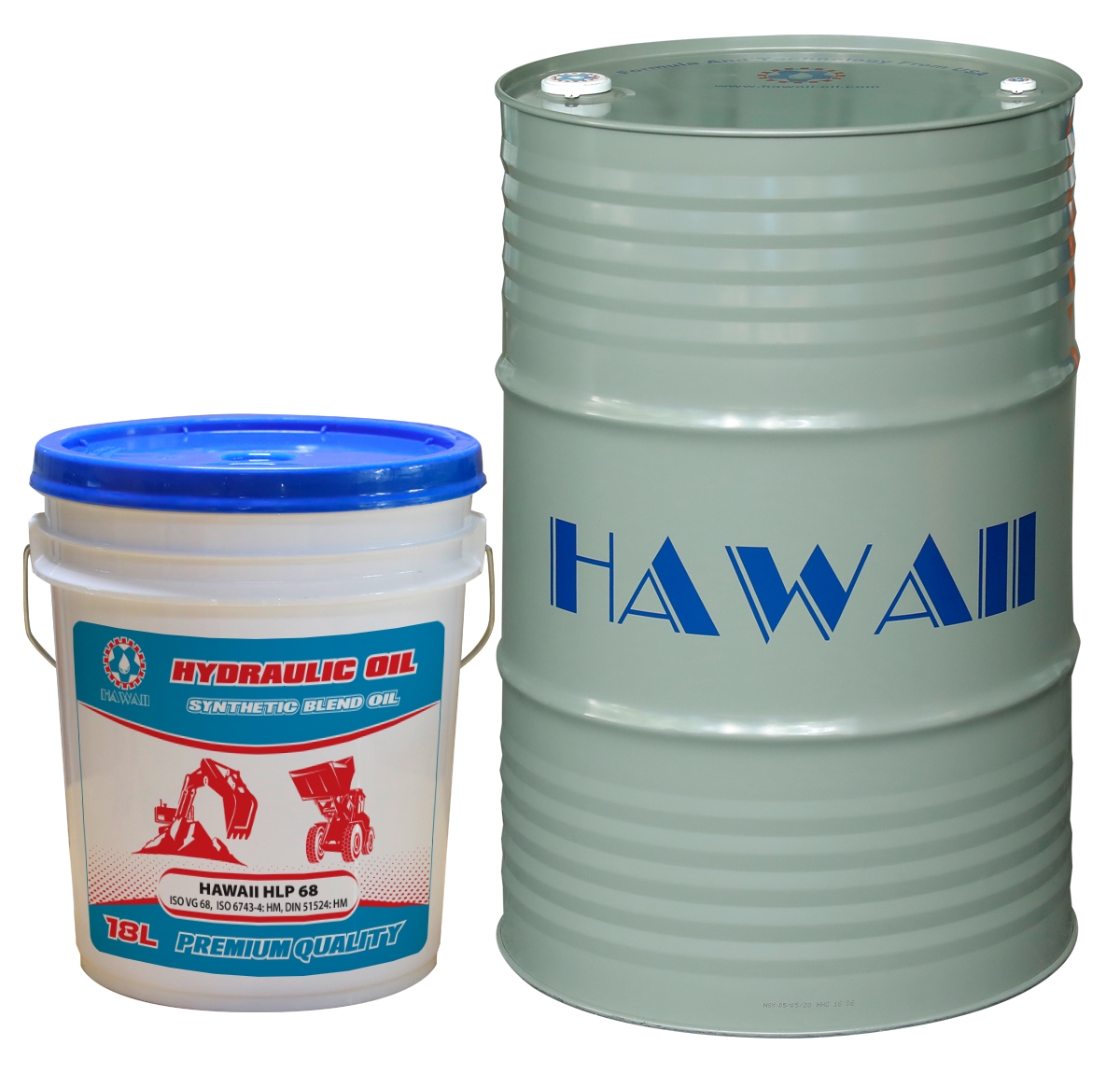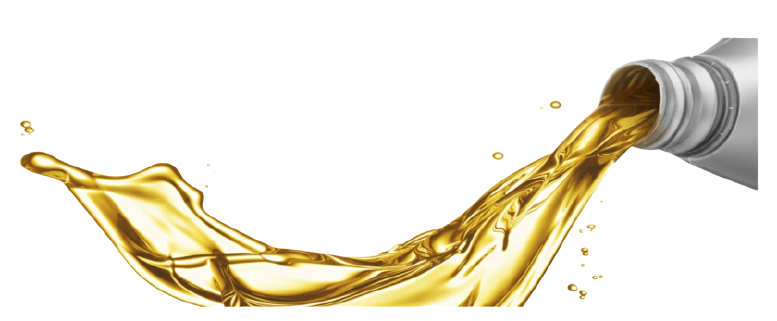
Synthesize the substances found in lubricants and learn their uses
Lubrication professionals are often very familiar with the base oil viscosity in their lubricant because viscosity is the most important base oil property. However, there is more to the lubricant than just the viscosity. It is important to understand the role of additives and their functions in lubricants. To better understand, Hawaii Oil will analyze this issue through the article below, stay tuned!
I. THE ROLE OF ADDITIVES IN LUBRICANTS
Lubricant additives are organic or inorganic compounds dissolved or suspended as solids in the oil. They typically range from 0.1 to 30 percent by volume of oil, depending on the machine.
Additives have three basic roles:
Enhances the properties of existing base oils with antioxidants, corrosion inhibitors, antifoam agents and demulsifiers.
Inhibits undesirable base oil properties with pour point reducers and viscosity index (VI) improvers.
Infuses new properties to base oils with extreme pressure (EP) additives, detergents, metal deactivators and adhesives.
II. LUBRICATING ADDITIVES
There are a variety of chemical additives that are mixed into base oils to enhance the base oil’s properties, to suppress some undesirable base oil properties, and possibly to create some new properties.
Additives typically make up about 0.1 to 30 percent of the finished lubricant, depending on the target application of the lubricant.
Lubricants are expensive chemicals, and creating the right additive mix or formulation is a very complex science. It is the choice of additives that distinguish turbine oils (R&O) from hydraulic, gear and engine oils.
Many lubricant additives are available and they are selected for use based on their ability to perform their intended function. They are also chosen for their ease of mixing with selected base oils, compatibility with other additives in the formulation, and cost savings.
Some additives perform their function within the oil itself (e.g., antioxidants), while others perform their work on the metal surface (e.g., anti-oxidant additives). abrasives and rust inhibitors).
Conventional lubricant additives
These include the following common additives:
1. Antioxidants
Oxidation is a common attack on the weakest components of the base oil by oxygen in the air. It occurs at all temperatures all the time but is accelerated at higher temperatures and by the presence of water, abrasive metals and other impurities.
Finally, it produces corrosive acids and sludge resulting in surface deposits and increased viscosity. Oxidation inhibitors, as they are called, are used to prolong the service life of the oil.
They are consumable additives, used while on duty to delay the initiation of oxidation, thus protecting the base oil. They are present in most oils and greases.
2. Corrosion and rust inhibitor

These additives reduce or eliminate internal rust and corrosion by neutralizing acids and forming a protective chemical barrier to repel moisture from metal surfaces.
Some of these inhibitors are specifically designed to protect certain metals. Therefore, an oil may contain several corrosion inhibitors. As above, they are commonly used in almost all oils and fats. Metal deactivators are another form of corrosion inhibitors.
3. Viscosity Index Improver

Viscosity index improvers are very large molecular size polymer additives that partially prevent oil thinning (loss of viscosity) with increasing temperature.
These additives are used extensively when blending multigrade engine oils such as SAE 5W-30 or SAE 15W-40. They function to help the oil circulate better at low temperatures, resulting in reduced wear and improved fuel economy.
In addition, viscosity index improvers are used in the formulation of high VI hydraulic and gear oils to improve starting and lubricating properties at low temperatures.
To visualize how the VI improver works, think of it as an octopus or coil spring coiled in a ball at low temperatures so it has very little effect on the oil’s viscosity. As the temperature increases, the additive (the octopus) expands (unfolds the tentacles) making it larger and preventing the oil from thinning too much at high temperatures.
Viscosity index improvers have a few negative characteristics. Additives are large (high molecular weight) polymers that make them susceptible to being cut into small pieces by machine parts. Gears are notoriously harsh on VI improving additives.
Permanent severance of the VI improving additive can cause significant viscosity loss that can be detected by oil analysis. The second form of loss of viscosity occurs due to large shear forces in the load region of the friction surface (for example, in a bearing).
It is thought that the VI improving additive has lost its uniform shape or directionality and thus partially lost its thickening ability.
More about this source textSource text required for additional translation information
Send feedback Side panels
The oil viscosity drops temporarily in the load zone and then returns to its normal viscosity after leaving the load zone. This characteristic really aids in reducing fuel consumption.
There are several different types of VI improvers (olefin copolymers are common). High-quality VI improvers experience less permanent loss of shear than cheap, low-quality VI improvers.
4. Anti-wear additive (AW)

These additives are commonly used to protect machine components from wear and metal loss under thin film lubrication conditions. They are polar additives that adhere to friction metal surfaces.
They react chemically with metal surfaces when metal-to-metal contact occurs under mixed and thin film lubrication conditions.
They are activated by contact heat to form a film that minimizes wear. They also help protect the base oil from oxidation and the metal from damage by corrosive acids.
These additives are “dissipated” as they perform their function, after which damage due to adhesive wear is increased. They are usually phosphorus compounds, the most common of which is zinc dialkyldithiophosphate (ZDDP).
There are different versions of ZDDP – some for hydraulic applications and others for the higher temperatures encountered in engine oils. ZDDP also has some antioxidant and corrosion inhibitory properties. In addition, other types of phosphorus-based chemicals are used for wear protection (eg TCP, Tricresyl Phosphate).

HAWAII HYDRAULIC AW – Hydraulic oil containing advanced anti-wear additive AW
5. Extreme pressure additive (EP)
These additives are chemically stronger than the AW additives. They chemically react with metal (iron) surfaces to form a sacrificial surface film to prevent soldering and sticking caused by metal-to-metal contact (adhesive abrasion) between the burrs. bump opposite each other.
They are activated at high loads and high contact temperatures are generated. They are commonly used in gear oils and give those oils their unique, strong sulfuric odor. These additives often contain sulfur and phosphorus compounds (and sometimes boron compounds).
They can corrode yellow metals, especially at higher temperatures, and are therefore not intended for use in worm gears and similar applications where copper-based metals are used. Some chlorinated EP additives are also available, but are rarely used due to concerns about corrosion.
Anti-wear and extreme pressure additives form a large group of chemical additives that perform the function of protecting metal surfaces during thin film lubrication by forming a protective film or barrier on the surface. Abrasion.
As long as an elastic hydrodynamic or hydrodynamic oil film is maintained between the metal surfaces, thin film lubrication will not occur and these thin film lubricating additives will not be needed to perform their function. they.
When the oil film breaks down and protrusion contact occurs under high loads or high temperatures, these thin film lubricant additives protect surfaces from wear.
6. Detergent
Detergents perform two functions. They help keep hot metal components free of scale (clean) and neutralize acids that form in the oil. Detergents are mainly used in engine oils and are alkaline in nature.
They form the basis of an engine oil’s reserve alkalinity, known as alkalinity (BN). They are usually calcium and magnesium based materials. In the past, detergents made from barium were used but are rarely used nowadays.
Since these metal compounds leave behind ash deposits when the oil is burned, they can create undesirable deposits in high temperature applications. Because of this ash concern, many OEMs are specifying low ash oils for equipment operating at high temperatures. Detergent additives are often used in conjunction with dispersants.

Dispersants are mainly found in engine oils with detergents to keep the engine clean and free of deposits. The main function of a dispersant is to keep the diesel engine soot particles finely dispersed or suspended in the oil (less than 1 micron in size).
The purpose is to keep the dirt suspended and not allow it to accumulate in the oil to minimize damage and possibly get out of the engine during an oil change. Dispersants are usually organic and ashless. Therefore, they cannot be easily detected by conventional oil analysis.
The combination of detergent/dispersant additives results in more acidic compounds being neutralized and more pollutant particles in suspension. As these additives perform the function of neutralizing acids and dispersing impurities, they will eventually exceed their capacity and will require an oil change.
7. Anti-foam agent

The chemicals in this additive group have low surface tension, which weakens the oil foam, making the foam more fragile. They have an indirect effect on oxidation by reducing the amount of air-oil contact.
Some of these additives are oil-insoluble silicone materials that are finely dispersed in the lubricant and are usually required in very low concentrations. If too much antifoam additive is added, it can have the opposite effect and promote foaming and drag with the air.
8. Friction Modifier
Friction modifiers are commonly used in engine oils and automatic transmission oils to change the friction between engine components and transmission. For the engine, the focus is on reducing friction to improve fuel economy. For the gearbox, the focus is on enhancing the grip of the clutch materials.
Friction modifiers can be considered as antiwear additives for lower loads that are not activated by contact temperature.
9. Melting temperature reducing agent

The melting point of an oil is the lowest temperature at which the oil will remain liquid. Wax crystals that form in paraffinic mineral oil will crystallize (become solid) at low temperatures. The solid crystals form a network that prevents the flow of the remaining liquid oil.
Additives in this group reduce the size of the wax crystals in the oil and their interactions with each other, allowing the oil to continue to flow at low temperatures.
10. Demulsifier additive
Demulsifying additives prevent the formation of stable oil-water mixtures or emulsions by changing the surface tension of the oil so that the water will coalesce and easily separate from the oil. This is an important property for lubricants that come into contact with steam or water so that free water can settle and be easily discharged from the reservoir.
11. Emulsifier
Emulsifiers are used in water-based metalworking fluids and fire-resistant hydraulic oils to help create durable oil-water emulsions. Emulsifiers can be thought of as a glue that binds oil and water together, because normally they want to separate from each other due to surface tension and differences in specific gravity.
12. Bactericides and Adhesives
Biocides are often added to water-based lubricants to control bacterial growth.
An adhesive is a viscous material used in some l
ubricating oils and greases to prevent the lubricant from splashing off metal surfaces during rotation.
A few key points about additives:
- To be accepted by manufacturers and users, additives must be able to be handled in conventional mixing equipment, be stable in storage, be odor-free and non-toxic in accordance with industry standards. usually, common, normal.
- Since many are highly viscous materials, they are often sold to oil manufacturers as concentrates in a base oil carrier.
More additives are not always better. The old saying, “Less is better, more is better” is not necessarily true when it comes to lubricant additives. - When more additives are mixed into the oil, sometimes no further benefit is obtained and many times the performance actually degrades. In other cases, the performance of the additive does not improve, but the shelf life is improved.
- Some additives compete with each other for space on the metal surface. If high concentrations of antiwear are added to the oil, the corrosion inhibitors may become less effective. The result can be an increase in corrosion-related problems.
EPILOGUE:
Thus, hopefully the sharing of Hawaii Oil will help readers better understand the additives needed in lubricating oils and their uses.
If customers have a need to use or need to learn about lubricating oils with additives suitable for the application, please contact the hotline below for advice and support as soon as possible:
